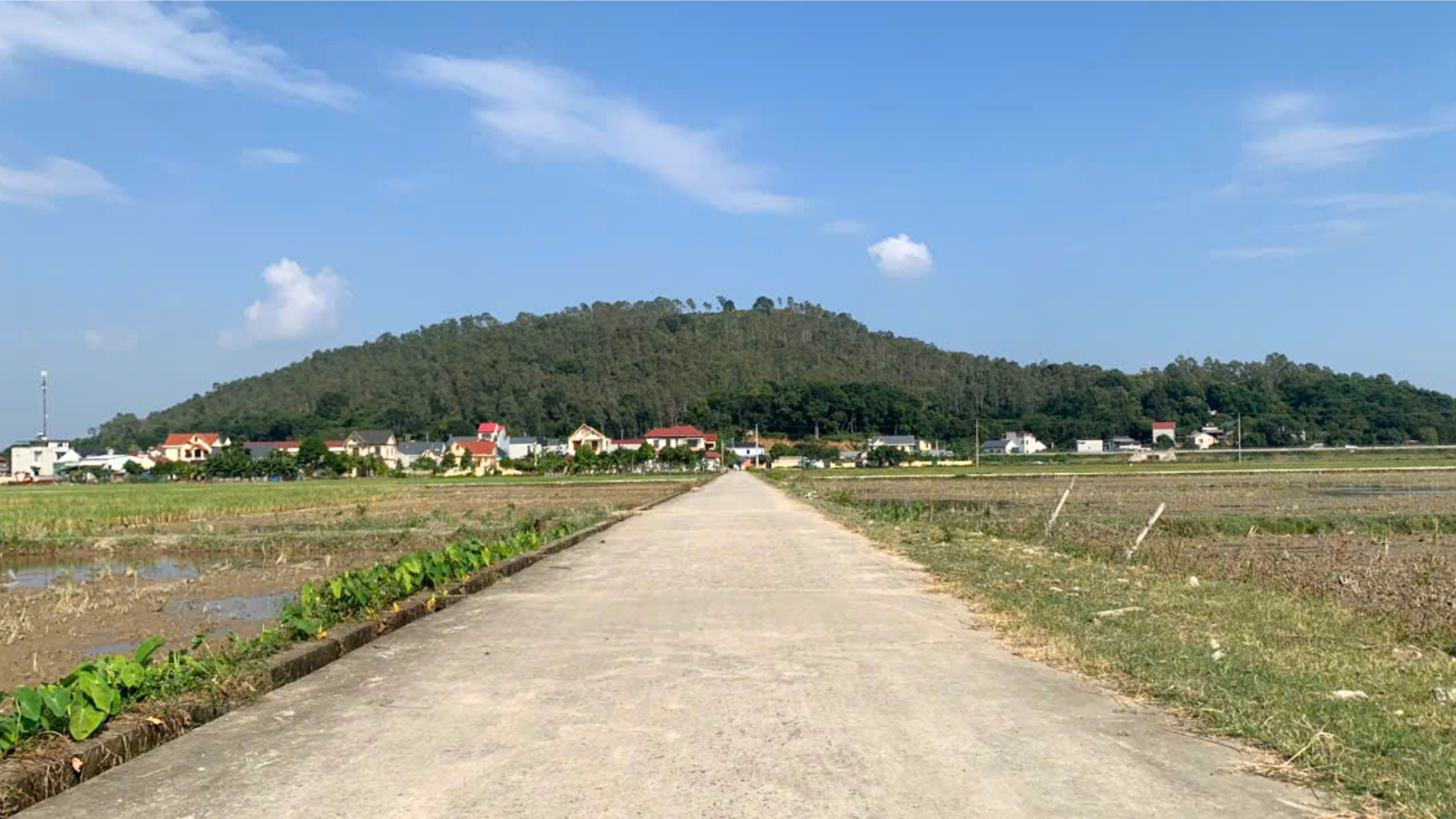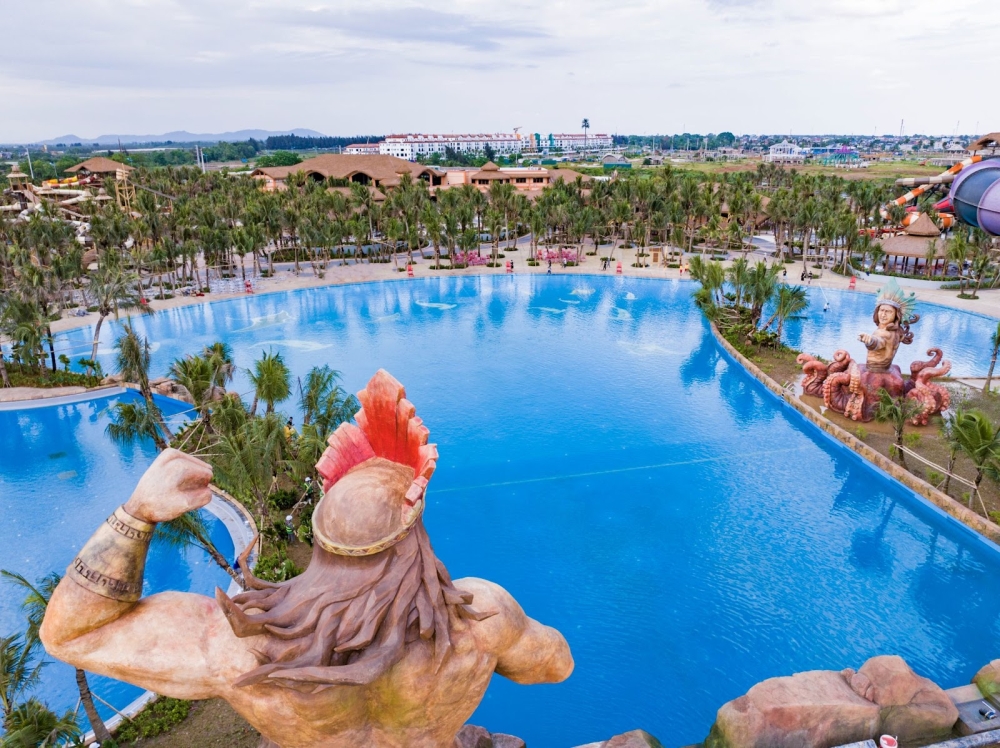1. Overview of Do Mountain Thanh Hoa - A Timeless Cultural and Historical Symbol
1.1. Special Geographical Location of Do Mountain Thanh Hoa
Right at the confluence of the Ma River and the Chu River, Do Mountain appears like a precious gem that nature has kindly bestowed upon this land. Located in Dong Tien ward, Thanh Hoa province, the mountain has become an important gateway for cultural exchange activities in the region.
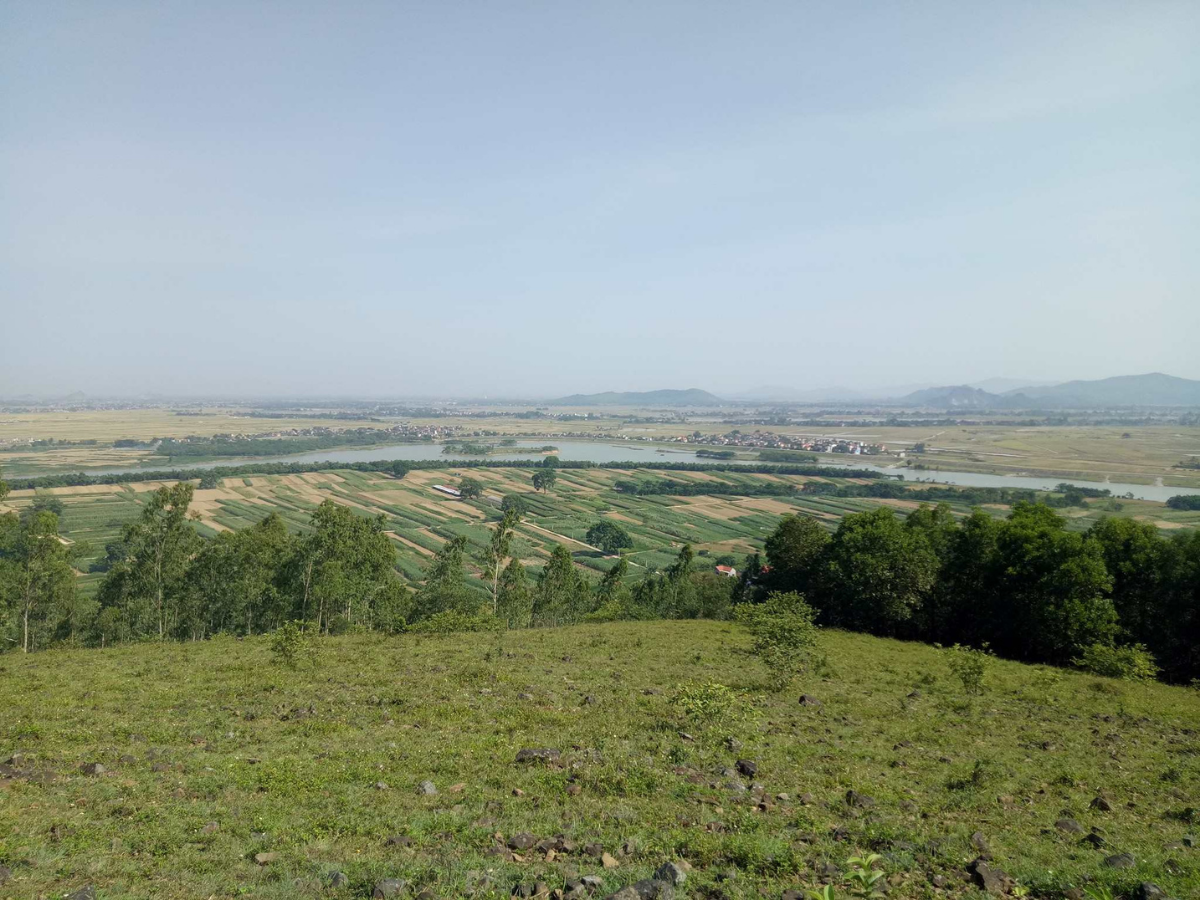
Do Mountain is like a precious gem located at the confluence of the Ma and Chu rivers. (Source: Collected)
The prime location at the confluence of two large rivers not only creates a majestic landscape but also makes Do Mountain Thanh Hoa a military and cultural stronghold through many generations. Thanks to this terrain, this place has witnessed countless historical changes and become a lasting symbol of the Thanh region.
1.2. Natural, Feng Shui, and Landscape Characteristics of Do Mountain Thanh Hoa
Although only about 158 m high, Do Mountain Thanh Hoa makes a strong impression with its solid rocky terrain and gentle slopes with a gradient of 200 to 250 m. Seen from afar, the mountain's shape resembles a large turtle lying on the bank of the Chu River, hence the folk name Quy Son.
The poetic name "Linh quy hí thủy", meaning the sacred turtle plays in the water, reflects both natural beauty and profound feng shui messages. Together with Ban A Mountain and Con Chan Tien Islet, Do Mountain Thanh Hoa forms a sacred connection, which local people believe is a place where spiritual energy converges, bringing peace and prosperity to this land.
1.3. Origin of the Name and Identity of Do Mountain
The richness in naming has contributed to the special identity of Do Mountain Thanh Hoa . Besides its main name, this place is also known by many other names depending on the area, such as Nui Do or Nui Tran. Ancient names like Quy Son or Linh quy hí thủy are all associated with the image of the sacred turtle, symbolizing eternity and stable development. Legends of the divine turtle drinking water have left a deep spiritual imprint on the souls of many generations of local people. Do Mountain Thanh Hoa was once listed among the Ban A Ten Sights, becoming an indispensable element in the cultural identity of the Thanh region.
2. Unique Archaeological and Historical Values of Do Mountain Thanh Hoa
2.1. Archaeological Site of Do Mountain Thanh Hoa: Evidence of Paleolithic Humans
The journey of archaeological exploration at Do Mountain Thanh Hoa began in the 1960s, with the participation of international experts, including Prof. P.I. Boriskovski from the former Soviet Union. Through four major excavations, researchers have found concrete evidence of the presence of primitive humans here.

Researchers have found authentic evidence of the presence of primitive humans. (Source: Collected)
Artifact analysis shows they date from 30,000 to 40,000 years ago, belonging to the early Paleolithic period. This confirms that Nui Do is not only a natural scenic spot but also valuable scientific evidence of the existence of prehistoric humans in Vietnam. This discovery has helped Nui Do Thanh Hoa be recognized as one of the most important archaeological sites in Southeast Asia.
2.2. Quantity and types of archaeological artifacts discovered at Nui Do Thanh Hoa
The Nui Do Thanh Hoa archaeological site boasts a rich collection of artifacts, with approximately 2,500 items discovered and preserved. Notable among these are tools such as hand axes, adzes, grinding stones, flakes, and many other primitive shaping tools. Each artifact tells a story about the craftsmanship and life of ancient people.
Specifically, areas like the cooking hearth cave, the saddle-shaped hill, and the fairy's foot mound mark the spaces for living, cooking, and tool-making activities of our ancestors. Although sharing similarities with the renowned Dong Son culture, the relics of Nui Do Thanh Hoa date much earlier, creating the unique value of this land.
2.3. The role of Nui Do in the culture and life of ancient Vietnamese people
The artifacts found at Nui Do Thanh Hoa clearly depict the life of prehistoric communities. Activities such as hunting, gathering, and tool-making demonstrate their dexterity and flexible adaptability to nature. Ancient inhabitants knew how to form communities, allocate tasks, and develop life skills over generations.
Nui Do itself was the environment for these early inhabitants to thrive, the place where they learned to exploit their surroundings and laid the foundation for national culture. The significance of Nui Do Thanh Hoa extends beyond the national scope, contributing to the developmental progress of humanity in Southeast Asia.
2.4. The preservation process and recognition of Nui Do Thanh Hoa as a heritage site
The value of Nui Do Thanh Hoa has been proven through its recognition by the State as a national historical and cultural relic since 1962. The protected area spans 34,736 hectares, making it a crucial archaeological research point for the entire country.
By 2020, the Thanh Hoa Provincial People's Committee approved a plan to develop the Ham Rong and Nui Do area into a heritage park city, oriented towards modernity and international standards. The long-term goal is to make Nui Do Thanh Hoa a world cultural heritage site. However, the preservation process faces challenges due to rapid population growth and urbanization, requiring joint efforts from all levels and the community to safeguard its precious values.
3. Tourist experience at Nui Do Thanh Hoa
3.1. Unmissable experiences when visiting Nui Do Thanh Hoa
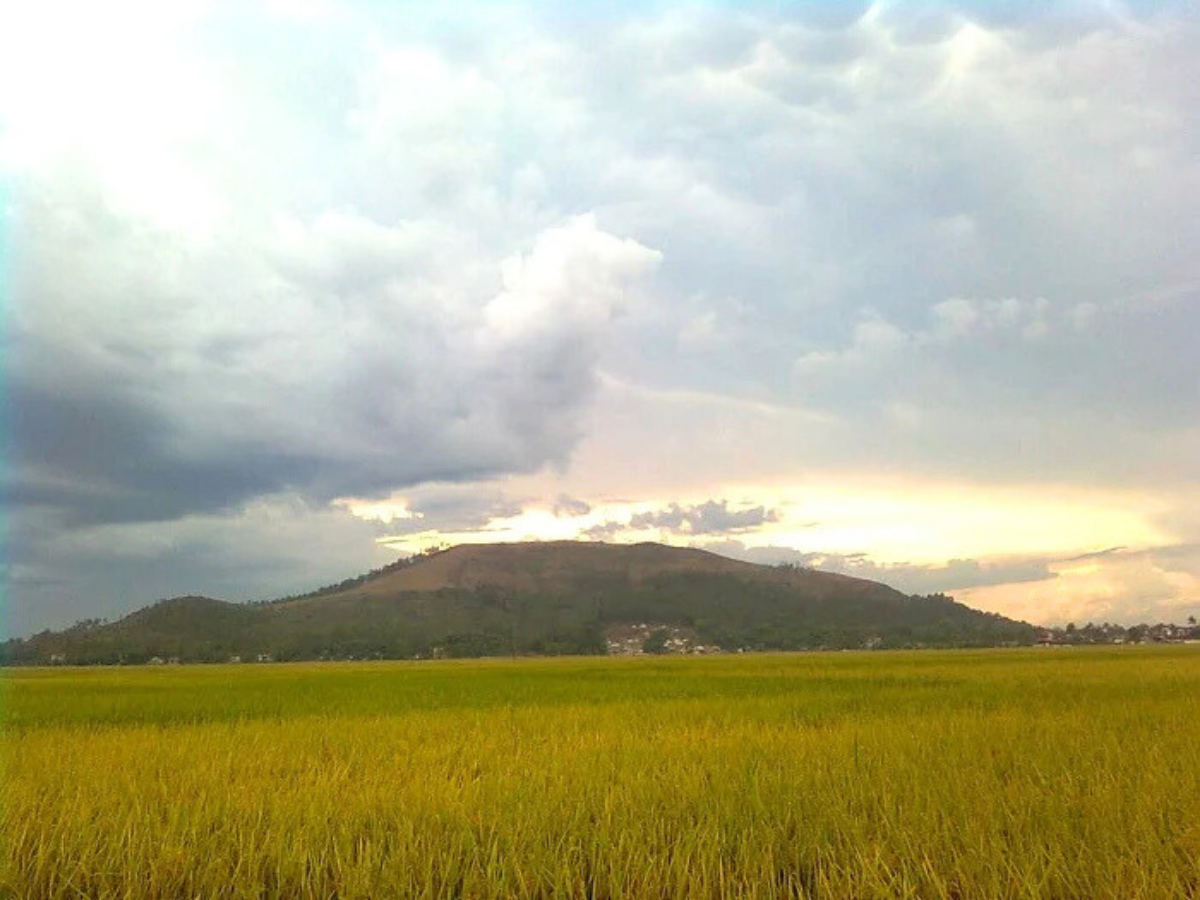
A trip to Do Mountain Thanh Hoa offers visitors many unique and unforgettable experiences. (Source: Collected)
A trip to Do Mountain Thanh Hoa offers visitors many unique and unforgettable experiences. The journey often begins with a stop at typical archaeological sites, which still preserve many traces of prehistoric people.
Trekking to the mountaintop will give visitors a panoramic view of the confluence of the Ma River and Chu River, especially at dawn. Many small caves hidden deep within the mountain are suitable for those who love exploration. The spiritual space at Do Pagoda, Vom Pagoda, and the ancient freshwater well will bring a sense of peace and reverence to every visitor when coming to Do Mountain Thanh Hoa.
3.2. The spiritual, feng shui, and legendary attraction of Thanh Hoa at Do Mountain
The name "Linh quy hí thủy" (Sacred turtle playing in water) evokes a colorful spiritual world of Do Mountain Thanh Hoa. The image of a sacred turtle playing in water is not only beautiful in form but also has great feng shui significance, with local people often entrusting their hopes for prosperity and luck.
The story of the Fairy's footprint, legends related to ancient cooking stoves, or the event of the righteous army gathering to defend the country have become the soul of community life. Traditional festivals along the Ma River are also held regularly, combining spiritual values with the culture of the people of Thanh Hoa. Do Mountain Thanh Hoa is not just a tourist destination but also a place where beliefs are entrusted, where people find peace and hope for good things.
3.3. Suggested itinerary for visiting Do Mountain Thanh Hoa
For a one-day itinerary, start early with trekking to the mountaintop to watch the sunrise and admire the magnificent natural landscape. Next, take time to visit the important archaeological sites of the area. At noon, visitors can stop by Tien Footprint Hill for check-ins and enjoy local specialty dishes.
The journey concludes with a visit to Do Pagoda in the afternoon, immersing yourself in the tranquil mountain atmosphere. If you have two days, you can spend the first day entirely at Do Mountain Thanh Hoa, and the second day combining exploration of sites like Ham Rong, Dong Son ancient village, experiencing festivals, and the cuisine along the river.
The journey is perfectly complete when visitors can stop in the evening at Sam Son beach square, one of the modern symbols of Thanh Hoa tourism, which fully connects culture with the new vitality of the coastal city. With this combination, you will have a comprehensive view of the historical culture as well as the entertainment experiences of Thanh Hoa.
4. Experience and tips for traveling to Do Mountain Thanh Hoa
4.1. When to go and what to prepare when visiting Do Mountain Thanh Hoa
The most suitable time to visit Do Mountain Thanh Hoa is from March to October, when the climate is stable, suitable for mountain climbing activities. It is advisable to avoid going during the rainy season as the mountain path can be slippery and difficult to navigate. Preparing comfortable sportswear and non-slip hiking shoes is essential for the trip.
Visitors should bring drinking water, a camera to capture memorable moments, and necessary items to ensure safety while climbing. Some sections of the road have steep slopes and cliffs, so thorough preparation will make the visit to Do Mountain Thanh Hoa more complete.
4.2. Notes on customs, spiritual culture, and preservation of relics
When visiting Do Mountain, visitors must show respect for spiritual spaces such as pagodas and ancient relics. Maintain silence, do not make noise, and absolutely do not draw or litter on archaeological sites.
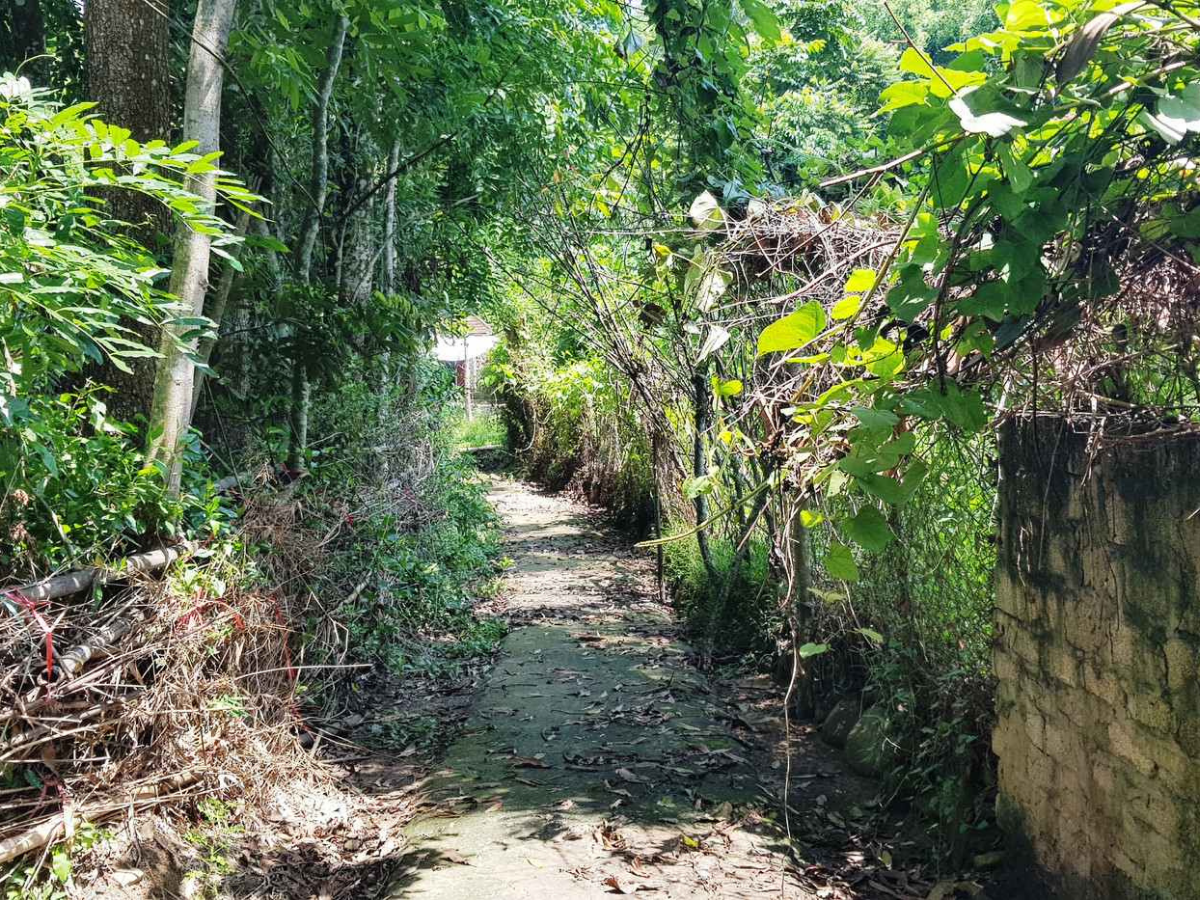
When visiting Mount Do, tourists need to show respect for spiritual spaces such as pagodas and ancient relics. (Source: Collected)
Especially in archaeological areas, do not arbitrarily take artifacts or affect ancient traces. Listen to and follow the guidance of local people to better understand the cultural value and contribute to preserving the heritage. Mount Do Thanh Hoa deserves to be a heritage that needs to be preserved and conserved for future generations.
4.3. Photography tips, attractive check-in spots at Mount Do Thanh Hoa
Ideal spots for photography at Mount Do Thanh Hoa are the mountain peak with panoramic views of the Ma River and Chu River. Large cliffs, the Hang Bac Bep (Bac Bep Cave), and Tien Chan sandbanks are attractive check-in locations with unique scenery and outstanding historical value.
To take beautiful and safe photos, tourists should travel in groups, choose shoes with good grip, and avoid standing near cliffs. Early morning and sunset times will provide the best light for photos. Mount Do Thanh Hoa offers many special natural frames, however, tourists still need to prioritize safety for every trip.




